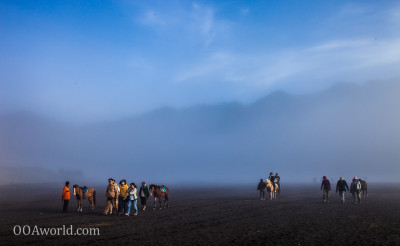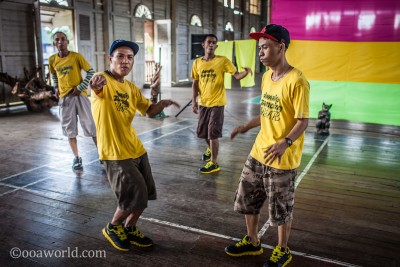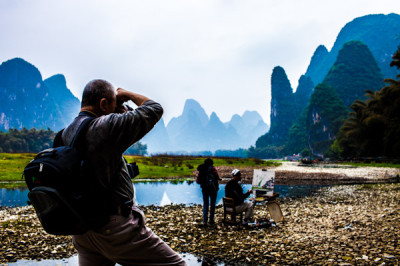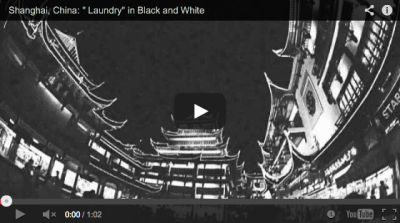The following is a short list of tips on how to conduct (video) interviews, more specifically spontaneous interviews with strangers.
A reader once asked how I managed to collect answers for the “What’s your philosophy in life?” interviews during ooAmerica, getting strangers to speak on camera and to answer a very personal question.
Of course, there are a variety of possible approaches to get a good (video) interview, and many excellent tutorials out there, so these are but a few observations based on my experience, divided into four sections:
– spotting and selecting the interviewee
– introducing yourself and your project
– Conducting the video interview: human interaction
– Conducting the video interview: Technical, audio and video
Spotting and selecting the interviewee
– At the beginning of the USA road-trip, I was sparse in my selection of interviewees: they were mostly people I had chatted with for a while, till they were comfortable, and then I asked them if they’d be willing to speak on camera.
– Afterwards, I started asking people on the spot, starting with those who seemed more extraverted, or ‘out there’, whether because of their external appearance or speech: they tend to be, inherently, pretty obvious. Unsurprisingly, talkative and friendly people are usually good interviewees.
– You can usually tell from a distance whether someone might be willing to talk, or would rather be left alone. Look for people who aren’t in too much of a hurry.
– Harder to spot are those who might seem shy on the outside but are really yearning to share their stories: most people in fact, if prompted on the right subject that they care about, can open up eloquently – even to strangers.
– As the documentary idea developed, and for the purposes of the project (namely, indiscriminately seeking out people of all tides, and in all kinds of situations) it became clear I needed to broaden my search, as well as include people who might not be comfortable on camera or answering a personal question: here’s when it becomes even more important to properly introduce yourself and your project.
Introducing yourself and your project
– Interviews are first and foremost about getting people to trust you so they can talk openly – and it always helps if you can genuinely honor that trust.
– First impressions matter: whether meeting a new friend, asking a potential mate’s phone number, or introducing yourself to a video interviewee, basic rules of social conduct remain the same. Steady eye contact, a firm handshake (or appropriate gesture of greeting) and a (modestly) enthusiastic and determined attitude often make or break the deal in the first seconds you meet the person.
– And smiling is always a good thing.
– Your verbal introduction is just as important: people were a lot more likely to respond if I made a point of saying that I’d been interviewing many people all over the country, or that this was part of a serious project (ie: insisting on the documentary aspect more than the Web output, which often sounds scarier to people).
– Likewise, it was helpful being with someone during the second road-trip, even if that person is not present it reassures people to know you’re part of a team (it’s more unsettling for people to trust a solitary wanderer).
– Keep your introduction short and to the point: people on the street don’t usually have much time to waste on a stranger.
– Reassure people that you won’t be asking too much out of them, and that it won’t take long – whatever you do, make them comfortable!
– Depending on the situation, you may or may not have more time to spend with the newly met person slash potential interviewee. In a number of cases, spending an extra five or ten minutes with someone is enough to win (back) their trust.
– Adapt to the person you’re speaking with when presenting the project – some people are laid back, others have a businesslike seriousness, some like to speak colloquially, others prefer to be more articulate, and so on.
– Sometimes you have to be a little bit pushy, though of course respectful of people’s privacy and comfort zone. A fair number of people just don’t want to be interviewed, although they might share some good stories off-camera. I’ve never recorded them without their knowledge, although some less scrupulous interviewers keep the camera running nonetheless…
– You should be clear about your intent and the use of the footage you’re gathering – if you plan to use these for any commercial purposes (and even if not), you should make sure interviewees sign a release form.
Conducting the (video) interview – Human interaction
– Icebreakers and ‘circumventing’ the issue: I consistently asked people to first give a very short introduction with their name and ‘who they were’ – this served both to get some information about them but also to ease them in to speaking to the camera.
– Often people want to know more about the project and the question beforehand – depending on your project this may be fine, I tend to think people’s answers are better (more unfiltered, genuine?) when they have to answer spontaneously. Unless the person really insisted, I’d simply tell them it was better if they heard the question once the interview was started – again, I reassured them as needed that the question was open-ended, uncontroversial, and so on.
– It’s a good idea to get the camera to run as soon as possible after getting the interviewee’s agreement – firstly because there might be worthwhile footage, but also because people tend to talk under the pressure of the camera, whereas they sometimes freeze up when trying to think too much about what they’re going to say (and can end up refusing to answer) – this might be another reason not to let the person know the specific question(s) beforehand.
– In a few cases people do freeze – particularly if the questions are difficult or asked too abruptly. In that case, changing the subject to easier matters can help break the ice. As mentioned above, if you’ve talked to the interviewee about other topics that visibly interest him / her, have them reiterate some of their thoughts on those subjects (even better if these can later be included in your project), then come back to your main question.
– The hardest thing to remember when conducting a video (or audio) interview: let the people talk! As opposed to a written-down interview, during which you’re free to converse with the subject, it’s important to keep your (audio) footage ‘clean’ for the editing.
– Avoid interjections and frequent interruptions, instead use non-verbal interactions to egg them on or gear the conversation in a particular direction: nodding your head, raising eyebrows, frowning, etc.
– Reversely, video and audio editing can be time-consuming: don’t hesitate to cut interviewees if their answer gets too long (again, non-verbal expressions can convey this too) or to bring them back to the point – this will save a lot of time when editing.
Conducting the (video) interview – Technical, Audio and Video
– Shot-wise, the rule of thirds usually works (ie: placing the subject on the right or left third of the shot, and having them look slightly towards the open space) – this is by no means the only way to do it though.
– Try to avoid background props or scenery that interfere with or protrude from the face of the interviewee.
– On the other hand, try pick out a background that’s not too bland, and if possible representative of your setting – this can prove difficult when interviewing people on the spot in random places.
– ‘Movers’ and ‘shakers’: some people’s bodies are more expressive than others – they move all over the place when talking. Try find a distance that will capture some of these mannerisms without making them too distracting either. Since a great part of a person’s personality and speech can be conveyed through body language, it’s important to capture, when possible, some of these mannerisms (or at least a few shots that can be used as cuts when editing). And if they’re simply moving too much, tell them so!
– If you’re using a manually-focused device, make sure to double-check this by zooming in on the person – the image could look sharp on a small camera screen but turn out to be blurry on a regular monitor or large screen. Another possible way to do this is by taking a picture of your subject using the auto-focus – just make sure the focus points are where you want them to be, and that the interviewee doesn’t move too much afterwards.
– (If your camera setting is too sharp though, the subject might become out of focus during the interview, especially if they’re ‘movers and shakers’.)
– Audio is an essential part of the video interview (which I unfortunately didn’t pay close attention to for a while), as shots can always be replaced during the editing, but audio footage can’t, and is difficult to fix – this however is not a discussion about audio-recording equipment and editing – let’s just assume you have a decent enough microphone or recording device.
– Be aware of your environment, especially when shooting outside: some places are just too noisy, windy and so on. Even inside, there may be that annoying fan noise or neon hum. Try pick another spot, unless it can’t be helped. If there’s an interview that just can’t be missed, it’s always better to get it and see what can be done afterwards.
– Get the audio somehow: even if it means you need to stand (or hold a microphone) in someone’s face to record their voices.
– After a while, I regularly prompted people to speak up during my introduction.
– During the interview, use non-verbal communication (raising your palm upwards, etc.) if the interviewees are speaking too low.
– If there’s some traffic, or a punctual disturbance, wait a few extra seconds for that 30-ton truck or bus to drive by.
– If someone said something important just when that truck rushed by, ask them to repeat it.
– Some people simply are quiet – even after being repeatedly asked to speak louder. There’s not much that can be done in that case.
– Sometimes you get a good interview that unfortunately just can’t be used – but hearing someone’s unique story is invaluable! There are plenty of creative ways to use that story afterwards, even if it’s not the conventional video interview footage you had planned for.
All in all, these are pretty straightforward tips, most of which might seem obvious – but when in comes down to the interview, and you only have a minute or a few seconds to introduce yourself, convince someone to do the interview, set up the shot, and conduct it, it becomes a matter of muscle memory to get all, or most, of these things right.
Hope it helps and also clarifies some of my approach during ooAmerica, and now ooAsia! Again, there are plenty of great tutorials on this subject which you can find by searching “How to do a video interview.”
In the second part of this post is an update about the ooAsia documentary project and “Tell me a Story” interviews – in this I will discuss more about conducting interviews with the added difficulty of bridging cultural and linguistic barriers.







That’s some great advice, thanks for the tips. I always keep the camera rolling after officially ending an interview, as people will often loosen up just a bit and provide a golden nugget of a quote. Sometimes it’s enough to really get to the meat of the conversation.
Thanks. Agreed, great piece of advice which I omitted here; too often did I shut the camera just as that golden nugget was said!